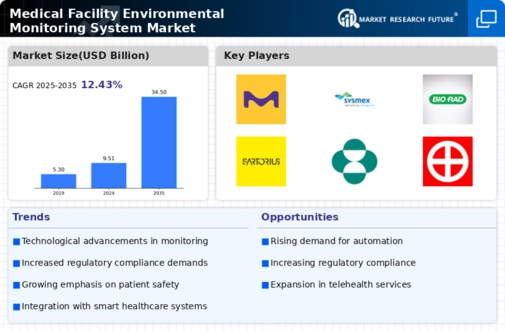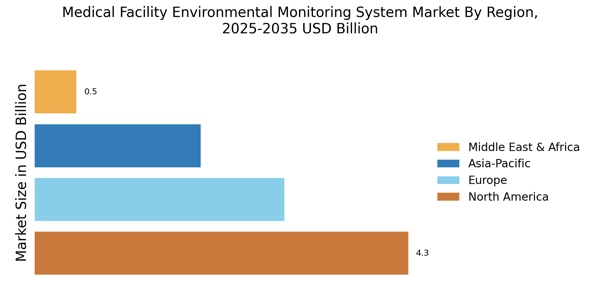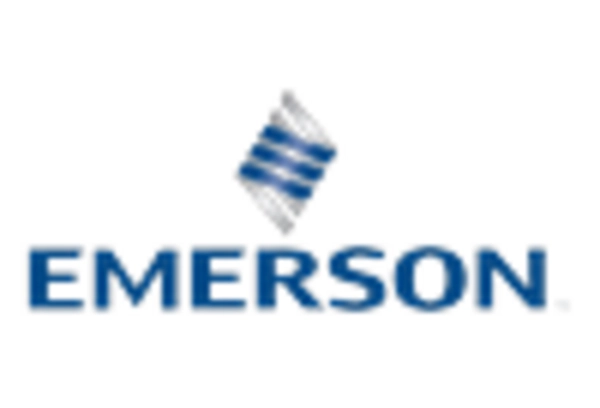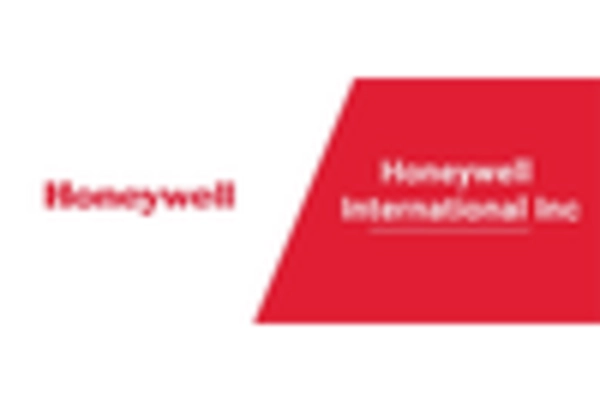Increased Focus on Sustainability
The increased focus on sustainability within the healthcare sector is shaping the Medical Facility Environmental Monitoring System Market. Medical facilities are increasingly adopting eco-friendly practices, which include monitoring and managing their environmental impact. This trend is driven by both regulatory pressures and a growing commitment to corporate social responsibility. Environmental monitoring systems that track energy consumption, waste management, and resource utilization are becoming essential tools for healthcare providers aiming to reduce their carbon footprint. As sustainability initiatives gain traction, the market for environmental monitoring systems is expected to expand, with projections indicating a potential growth of 15% in the next five years.
Rising Awareness of Patient Safety
There is a growing awareness of patient safety and the impact of environmental factors on health outcomes, which is significantly influencing the Medical Facility Environmental Monitoring System Market. Hospitals and healthcare facilities are recognizing that maintaining optimal environmental conditions, such as temperature, humidity, and air quality, is crucial for patient recovery and infection control. This awareness is prompting investments in monitoring systems that ensure compliance with safety standards. According to recent data, nearly 70% of healthcare facilities are prioritizing environmental monitoring as part of their patient safety initiatives, indicating a robust demand for advanced monitoring solutions.
Regulatory Compliance and Standards
The stringent regulatory compliance requirements imposed by health authorities are a major driver of the Medical Facility Environmental Monitoring System Market. Healthcare facilities are mandated to adhere to specific environmental standards to ensure patient safety and quality of care. These regulations often necessitate the implementation of comprehensive monitoring systems that can provide real-time data and reporting capabilities. As regulatory bodies continue to update and enforce these standards, the demand for reliable environmental monitoring solutions is likely to increase. It is estimated that compliance-related investments in monitoring systems could account for a significant portion of the market, potentially exceeding 30% of total expenditures in the sector.
Integration of Advanced Technologies
The integration of advanced technologies, such as artificial intelligence and machine learning, is driving the Medical Facility Environmental Monitoring System Market. These technologies enhance data analysis and predictive capabilities, allowing for more efficient monitoring of environmental conditions. For instance, AI algorithms can analyze vast amounts of data in real-time, identifying potential issues before they escalate. This proactive approach not only improves patient safety but also optimizes resource allocation within medical facilities. As healthcare providers increasingly adopt these technologies, the demand for sophisticated environmental monitoring systems is expected to rise, potentially leading to a market growth rate of over 10% annually in the coming years.
Technological Advancements in Sensors
Technological advancements in sensor technology are propelling the Medical Facility Environmental Monitoring System Market forward. Modern sensors are becoming more sophisticated, offering enhanced accuracy and reliability in monitoring environmental parameters. These advancements enable healthcare facilities to gather precise data on air quality, temperature, and humidity levels, which are critical for maintaining optimal conditions. The proliferation of wireless sensor networks is also facilitating real-time monitoring and data transmission, making it easier for medical facilities to respond promptly to any environmental changes. As sensor technology continues to evolve, the market is likely to witness a surge in demand for innovative monitoring solutions, potentially leading to a market expansion of over 12% annually.


















Leave a Comment